Rare Magellan pieces among highlights of June art events
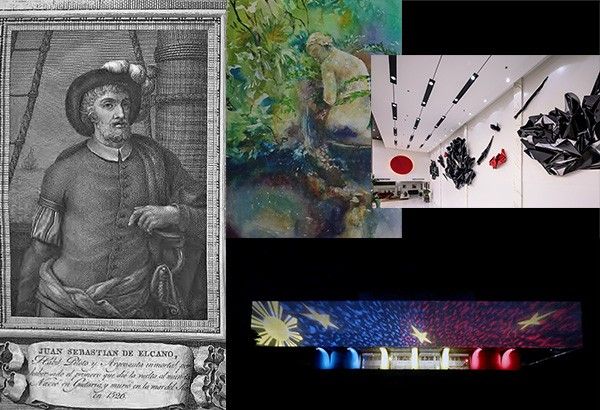
MANILA, Philippines — Rare artifacts pertaining to Magellan’s first circumnavigation of the Earth dating back between 1565 to 1588 will be showcased at the second open “Flea Market at Palacio de Memoria” from June 5 to 6, 10 a.m. to 5 p.m.
The Gallery of Prints will be showcasing the collection titled, “The Half Millenium Arrival of Ferdinand Magellan,” at the Flea Market. This also marks the first time that many of the items will be for sale. Discerning art and antique collectors will particularly enjoy the complete original three volume set of Giovanni Battista Ramusio’s “Delle Navigatione et Viaggi” (Navigations and Travels), published during the second half of the 16th century. The book includes the famous Ramusio analysis of the Pigafetta Narrative of Magellan/Elcano’s First Circumnavigation and narrative sequences on the same voyage from Maximillianus Transylvanus, which first appeared in 1522.
The collection will also include the Gastaldi Map, considered the “Birth Certificate” of the Philippines with “Filipina” appearing for the first time on a printed map. These volumes include 13 other famous maps, both with woodcuts and copper engravings. The map also includes an analysis of Pigafetta's account of Magellan.
Aside from the Gallery of Prints, the second Flea Market at Palacio de Memoria will also showcase incomparable pieces from Rue, Vidro, Gallery of Prints, Private Collection of Angelique Lhuillier, Private Collection of Edd Fuentes, Farzam, Silahis Center, Lotus Asian Antiques, and Caramel Creatives. Shoppers can also expect more rare and vintage finds, such as sculptures, furniture, textiles, accessories, toys and more.
Visitors to the Flea Market can also experience a gastronomical feast at the newly opened restaurant, The Loggia by Margarita Forés. They can indulge in delicious Italian meals in a beautiful al fresco dining set up by the lush gardens at Palacio de Memoria. They can also enjoy libations from Remy Martin and Sta. Ana Gin from 1 p.m. onwards.
Open for everyone, the two-day vibrant affair is a quick respite from the stresses of the current pandemic. To help ensure the health and safety of its visitors, Palacio de Memoria will strictly implement safety measures throughout the duration of the event.
Federico Aguilar Alcuaz exhibit
For the younger generation, Federico Aguilar Alcuaz belongs to the illustrious league of National Artists.
For those who have followed the master painter since his heydays in the 70s to 2000s, he's mythical.
Federico was born the sixth of eleven children to lawyer Mariano Aguilar, and homemaker Encarnacion Alcuaz, on June 6, 1932. His father was a lawyer and an accomplished musician-composer who had a concert hall within the compound of their home in Santa Cruz, Manila, in the corner of Santo Domingo and Macopa.
Like his father, Federico is also musically inclined. He went to San Beda on a scholarship and played the cello at the school's orchestra. He would also pursue law like his father; he went to the Ateneo de Manila while also cross-enrolled at the University of the Philippines.
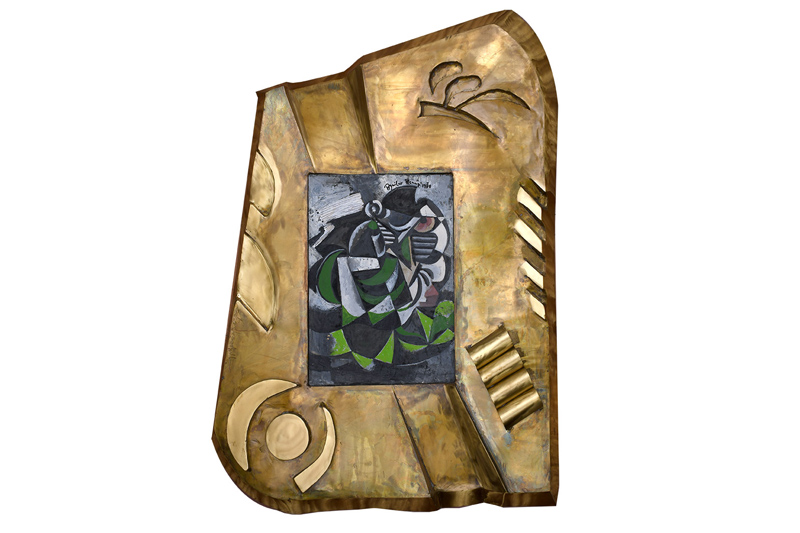
Federico is known to be an autodidact, thus, was presumed to have learned painting with ease after taking up formal classes at the UP College of Fine Arts when he was 17.
He had several solo exhibitions, like his solo at the Itoh Gallery in Tokyo, reputedly the first for a Filipino artist, in Japan, and solo exhibitions at Malacanang Palace in 1966, and the Luz Gallery in 1967.
Aguilar Alcuaz's form and style would later be influenced throughout the latter part of his career when he gets selected to represent the Philippines on a Harvard University International Seminar on Arts and Letters. There he met someone who would connect him with Art Protis, in Brno, Czechoslovakia. This is where he was introduced to a new medium which he would bring with him to the Philippines -- non-woven, pressed-on tapestry. This would incorporate well into his abstraction that he was working on in the 1960s.
It was the stories of the man that was Federico that made people equally curious as they are with his works.
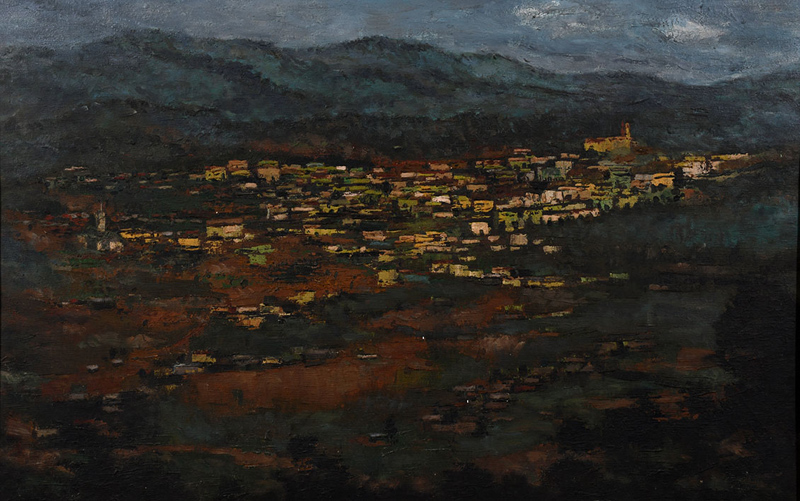
On his exhibition notes for the ongoing "Federico Aguilar Alcuaz: Unveiled" at the Art Lounge in Podium, it reads:
"When his name is said, the image of an eccentric genius often comes to mind; the artist who lived in a hotel; who could paint so many works in such a short time, whose works are exhibited in many museums in Spain, who was granted the Order of Genius, by the French Government, who could recite entire poems at a drop of a hat, and yet, had the youthful spirit to play pranks or music from a handheld keyboard which he always brought with him to friends and even strangers he met at the lobby of the hotel."
Both anecdotes of the man and veritable credentials of the artist make him an interesting and noteworthy subject.
Get to know Federico Aguilar Alcuaz through his works shown at the relaunch of Art Lounge Manila in its new space at The Podium, Ortigas Center. The exhibit is co-presented with the National Commission for Culture and the Arts. It is on view until June 6.

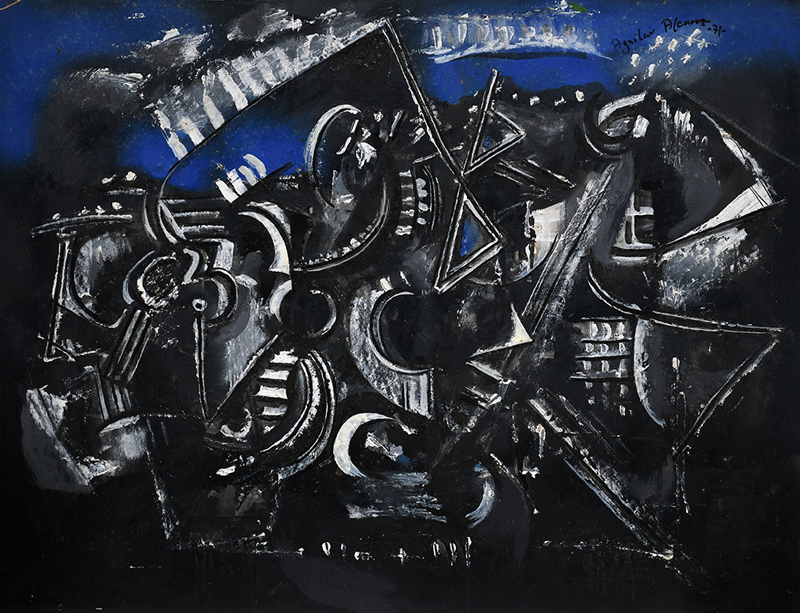
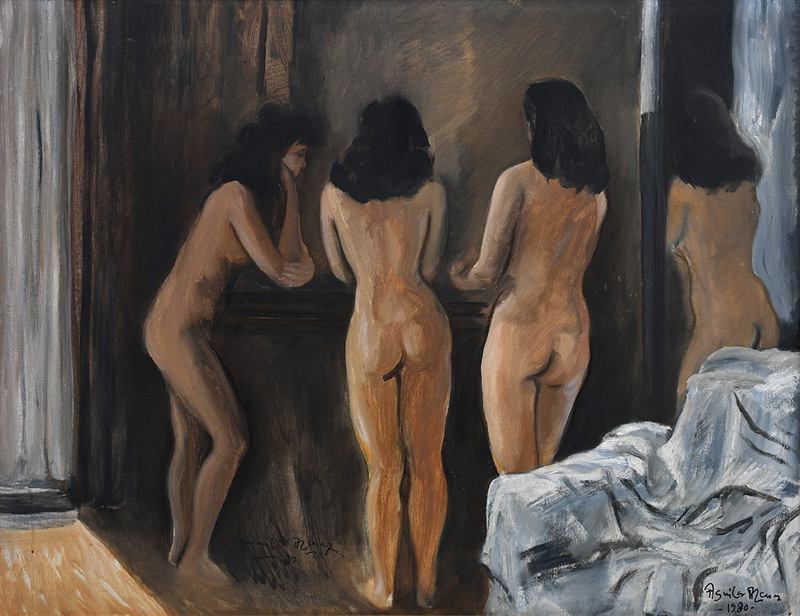
Master watercolorists present works
Fourteen masters of the watercolor genre have come together in a one-of-a-kind exhibition at the LRI Design Plaza in Makati City. Simply dubbed "Anyong Tubig (Images on Water)," the said exhibit will opened last March 27.
Pinky Peralta, president of the Philippine Guild of Watercolorists (PGW), will display some of her latest works that include "Kitchen Mess," "Sa Buslo," "Mama's Favorite Things," "Behind The Curtains," The Barber" (all sized 14" x 20"), "Blue Iris" (15" x 20"), "Convalescence," "Boracay 1," "Boracay 2," and "Secret Garden" (sized 15"x 21").
"Art found me when I was a young girl, nurtured by the oil paintings of my grandfather, a self-taught artist. Years later, while I was studying Interior Design at UP Diliman - another form of art lived in my heart - my love for watercolor was ignited at the summer workshops that I joined.
"But it wasn't until November 2016 that I embraced watercolor painting in full expression and pursuit. Watercolor, for me, captures the fluidity and translucence not palpable in other media. Its immediacy and effervescence provide a more spontaneous and energetic expression as a brushstroke releases water and pigment to do their work.
"My watercolor journey has been blessed by art lessons locally and internationally under masters such as Yuko Nagayama of Japan, Alvaro Castagnet of Uruguay, Prafull Sawant of India, Eudes Correa of Portugal, as well as Charles Reid and Stanley Miller of the United States. These master colonists impacted a lasting impression on the style that I would later harness as my own.
"At present, after doing my one woman show at the Gateway Gallery last November 2020 and a series of exhibits in watercolor, I am happy to share my knowledge by conducting watercolor workshops through the Pinky Peralta Studio. I am also the current president of Philippine Guild of Watercolorists, a group known internationally as IWS Philippines."
The other master watercolorists featured in the "Anyong Tubig" exhibit are Edgar Doctor, Yeye Caderon, Buds Convocar, Nani Gacho, Sen Lacson, Jerry de la Rosa, Kyle Legaspi, Gilbert Miraflor, Jinky Rayo, Ebson Sevilleno, Emmanuel Silva, Iris Babao Uy and Vino Yanuario.
"Anyong Tubig (Images on Water)" unfolded at the 2nd level of the LRI Design Plaza along Nicanor Garcia St. in Makati City, and will be open for public viewing during gallery hours.
CCP lights up facade in flag colors
The Cultural Center of the Philippines (CCP) bathes its Main Building façade with blue, red and yellow – hues from the Philippines’ national flag – until June 13.
This lighting display honors our war heroes who sacrificed their lives for our hard-earned freedom. It is also a fitting tribute and homage to the national flag – the symbol of our sovereignty and solidarity.
May 28 commemorates the first time the national emblem was unfurled, after the Philippine Revolutionary Army defeated the Spanish forces in the Battle at Alapan in Imus, Cavite in 1898. Whereas, June 12, marks its first official hoisting in Kawit, Cavite on the same year declaring Philippine Independence.
The façade lighting is a collaborative effort between Danilo Villanueva and Luis Alcoran, with Gobo makers Mark Macapulay and Shantie De Roca, working with theater crew members Kevin Orag, Richard Galvero, Jomar Lauta, Junelyn Maureal, Allan Jay Fami, Donato Alforja, Lucio Tapiru, Norman Aguirre, and Timothy John Calma.
In accordance with R.A. 8491 (Section 26), May 28 to June 12 marks the official celebration of the Flag Day, culminating in the celebration of Independence Day.
The facade lighting will happen from 7 p.m. to 10 p.m. daily, except Mondays.
Follow the official CCP social media accounts on Facebook, Twitter and Instagram. Visit the CCP website (www.culturalcenter.gov.ph) for more news on upcoming CCP events and activities.
Filipino visual artist’s sculpture captures Kojie.san’s 15-year story
The latest striking artwork at one of BEVi Group’s manufacturing plants in Alaminos, Laguna is the massive, multi-piece metal sculpture mounted on the wall of its main lobby. Created by modern Filipino visual artist Jinggoy Buensuceso for the 15th anniversary of Kojie.san, the artwork is very much a representation of the boldness and commanding way this beauty brand has made an impact on the industry, starting with a bar of soap and a then-unfamiliar main ingredient.
Providing a stark contrast to the serene white space that it occupies, Jinggoy’s sculpture Okurimono, features dramatic distortions reminiscent of crumpled pieces of paper in arresting shades of black and red. A single and striking large red circle sits alone on the opposite wall. Lovingly named Red Moon by the artist, the piece is a silent and steady witness to the dynamism of Okurimono.
The work is a testament to the artist’s skill and mastery of the medium, able to manipulate it exactly as he envisioned. It also fittingly reflects the remarkable brand that served as his muse, Kojie.san, and how it forged its own success by creating and commanding its own path.
Kojie.san, available at all leading supermarkets and drugstores nationwide, as well as its official LazMall on Lazada and Beauty MNL, started in 2006 as a pioneer of soap with kojic acid as its active ingredient. It’s highly recommended by dermatologists for its efficacy in evening out the skin, gently erasing age spots, scars and sun damage. The brand, however, came at a time when the market was already saturated with over 40 whitening brands vying to be the best in the category. Despite this, Kojie.san was undaunted, challenging the norms then and faced the competition head on. This was the audacity and originality that drew fans in.
Through the dedication of its founder and Chief Executive Officer Jazz Burila and its loyal following, the brand survived and thrived, eventually reaching 15 years of growth and success. The beauty brand’s milestone is the reason behind Jinggoy’s creation that captured Kojie.san journey of carving a path of its own.
Okurimono is not just a reflection of the brand’s journey to success, but also of its brand philosophy on beauty and what it stands for. Proudly proclaiming this, the brand officially launched "Command Beauty" in 2019, to encourage women to create their own definition of beauty instead of letting society set the standards for them.
For many years, women have been limited to what others tell them about what being beautiful is, but today, beauty can mean many things – beauty means diversity and democracy. It can mean what you want it to mean. You can define it based on your own understanding, inhibitions and experiences — just like art.
“Art speaks to your inner self, you define it based on your own understanding, inhibitions and experiences," said Jazz. "There’s no single way of appreciating an art piece, in the same way that we believe that there is no single way to be beautiful. In fact, you should create your own definition."



















